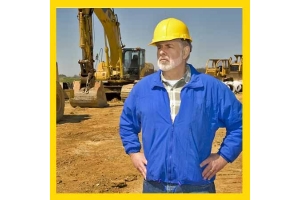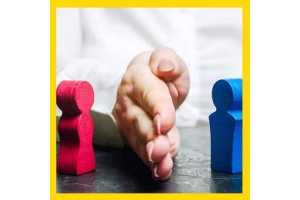Currency
December 27, 2020

This guidance was updated on 26 November and comes into force on 2 December. It is for everyone who has been identified as clinically extremely vulnerable (via letter from the NHS or GP).
The guidance has been updated to support the clinically extremely vulnerable in protecting themselves from exposure to coronavirus . It replaces previous guidance on shielding that was in place during the 4-week period of National Restrictions. The guidance is set out in 2 parts:
● Updated advice on protecting the clinically extremely vulnerable, based on the tiers of local restrictions in your area. The advice sets out the additional things people at the highest risk from COVID-19 are advised to do to keep themselves safe for each tier.
● Updated shielding advice that is more targeted and will only apply in some of the worst affected areas and only for a limited period of time. People are only advised to follow shielding advice if they receive a new written shielding notification.

On 2 December the country is moving back to a tiered system of local restrictions. The government has reinstated this guidance for clinically extremely vulnerable people linked to these tiers.
It offers additional advice to the clinically extremely vulnerable over and above the rules for the tiers, which apply to everyone. According to the government, the guidance aims to strike a better balance between providing practical steps to help keep people in this category safe while reducing some of the potentially harmful impacts on mental and social wellbeing that were associated with previous strict shielding. It sets out the steps clinically extremely vulnerable people can take to protect themselves for each local tier.
In the future, the government will only reintroduce formal shielding advice in the very worst affected local areas and for a limited period of time. This will only apply to some, but not all, Tier 3 areas and will be based on advice from the Chief Medical Officer. The government will write to those affected separately to inform them if they are advised to shield. The guidance states that people in this category are not advised to follow formal shielding advice again unless they receive a new shielding notification advising them to do so.
It is recognised that many people may want to be with their friends and family over the festive period. As a result, the government will be changing some restrictions on social contact, allowing the formation of a ‘Christmas bubble’ in which people can spend time indoors and outdoors, including inside a home, with people from up to three households.
This will only apply for a very limited period of time, from 23 December to 27 December.
Those who are clinically extremely vulnerable can choose to be part of a Christmas bubble but it does involve greater risks as the number of people you have contact with will be increasing.
It is important that you and the other people in your Christmas bubble consider these risks carefully before agreeing to form a bubble. Forming a Christmas bubble is a personal choice and should be balanced against the increased risk of infection, says the guidance.
Advice is set out for those in this category who do decide to form a Christmas bubble.
Advice from the Scientific Advisory Group for Emergencies (SAGE) has been published to help households safely plan for gatherings in the home. The advice from SAGE includes how to make a household plan. This is a practical plan to help you prepare for social interactions in the home, which is agreed by all those who will be attending. Preparing a household plan will help to reduce your risk of transmitting COVID-19, says the document.
A checklist of ten points is summarised below:
1. Consider whether meeting up is essential and cannot be postponed or replaced by safer forms of interaction.
Identify where in-person interactions could be replaced by online events or postponed until an appropriate future date, for example when in a lower tier.
2. Consider replacing indoor events with outdoor activities or using larger spaces to host events.
Outdoor and larger spaces may provide more physical space and better ventilation compared to households with less space.
3. Remember most infections happen indoors in private homes where people get close to friends and family.
Within the home we may be more likely to assume people and places we know are safe.
4. Take special care to protect people who are particularly vulnerable to serious consequences from infection.
This includes older people and those with underlying health conditions. It is also important to reduce the risk of infection among those who have close contact with particularly vulnerable people, for example carers or nurses.
5. Ensure people who are emotionally vulnerable have social support.
Special care should be taken to interact safely with people who are socially isolated, including meeting outside if possible, online or by phone.
6. People who have very little contact with others are unlikely to be infected and may be able to meet together safely.
People who have to self-isolate or quarantine should not meet with anyone. If people have to self-isolate due to COVID-19 symptoms or a positive test, or quarantine because they have been in contact with a confirmed case, then it is essential to do so regardless of the occasion.
7. Limit interactions to the same small group of people as much as possible.
This reduces the probability that someone will come into contact with the virus and limits how far the virus can spread if there is transmission. Meeting two groups of different people in the same week increases the risk of spreading the virus compared with meeting the same group of people twice. Limiting or avoiding interactions with other people in the 7-14 days before meeting, and reducing travel across different parts of the country can further reduce the likelihood of transmission.
8. Limit the time spent together, especially if meeting indoors.
Indoor interactions should be restricted as much as possible and reserved for short duration quality time. Children should meet vulnerable relatives, including grandparents, outside where possible; brief meetings such as walking or playing outside are safest.
9. Think about the space your event will take place in, and how people will interact.
You will need to think about cleaning, ventilation (fresh air) and the layout of rooms to allow for social distancing. Think about hygiene and any activities associated with the event, such as games or serving food. Transmission through airborne, droplet and surface contact routes can be reduced by following guidance on reducing the spread of COVID-19 in your household. Children should meet older or vulnerable relatives outside where possible. Brief outside meetings such as walking or playing are safest.
10. Agree the plan with friends and family before the event so that everyone knows the safest way to meet.
A plan is likely to be most successful if it is agreed in advance. This includes explaining it to children. Examples of household plans published by SAGE are available.
The guidance has been updated to support the clinically extremely vulnerable in protecting themselves from exposure to coronavirus . It replaces previous guidance on shielding that was in place during the 4-week period of National Restrictions. The guidance is set out in 2 parts:
● Updated advice on protecting the clinically extremely vulnerable, based on the tiers of local restrictions in your area. The advice sets out the additional things people at the highest risk from COVID-19 are advised to do to keep themselves safe for each tier.
● Updated shielding advice that is more targeted and will only apply in some of the worst affected areas and only for a limited period of time. People are only advised to follow shielding advice if they receive a new written shielding notification.

What has changed
On 2 December the country is moving back to a tiered system of local restrictions. The government has reinstated this guidance for clinically extremely vulnerable people linked to these tiers.
It offers additional advice to the clinically extremely vulnerable over and above the rules for the tiers, which apply to everyone. According to the government, the guidance aims to strike a better balance between providing practical steps to help keep people in this category safe while reducing some of the potentially harmful impacts on mental and social wellbeing that were associated with previous strict shielding. It sets out the steps clinically extremely vulnerable people can take to protect themselves for each local tier.
In the future, the government will only reintroduce formal shielding advice in the very worst affected local areas and for a limited period of time. This will only apply to some, but not all, Tier 3 areas and will be based on advice from the Chief Medical Officer. The government will write to those affected separately to inform them if they are advised to shield. The guidance states that people in this category are not advised to follow formal shielding advice again unless they receive a new shielding notification advising them to do so.
Advice during the Christmas period
It is recognised that many people may want to be with their friends and family over the festive period. As a result, the government will be changing some restrictions on social contact, allowing the formation of a ‘Christmas bubble’ in which people can spend time indoors and outdoors, including inside a home, with people from up to three households.
This will only apply for a very limited period of time, from 23 December to 27 December.
Those who are clinically extremely vulnerable can choose to be part of a Christmas bubble but it does involve greater risks as the number of people you have contact with will be increasing.
It is important that you and the other people in your Christmas bubble consider these risks carefully before agreeing to form a bubble. Forming a Christmas bubble is a personal choice and should be balanced against the increased risk of infection, says the guidance.
Advice is set out for those in this category who do decide to form a Christmas bubble.
Advice from the Scientific Advisory Group for Emergencies (SAGE) has been published to help households safely plan for gatherings in the home. The advice from SAGE includes how to make a household plan. This is a practical plan to help you prepare for social interactions in the home, which is agreed by all those who will be attending. Preparing a household plan will help to reduce your risk of transmitting COVID-19, says the document.
A checklist of ten points is summarised below:
1. Consider whether meeting up is essential and cannot be postponed or replaced by safer forms of interaction.
Identify where in-person interactions could be replaced by online events or postponed until an appropriate future date, for example when in a lower tier.
2. Consider replacing indoor events with outdoor activities or using larger spaces to host events.
Outdoor and larger spaces may provide more physical space and better ventilation compared to households with less space.
3. Remember most infections happen indoors in private homes where people get close to friends and family.
Within the home we may be more likely to assume people and places we know are safe.
4. Take special care to protect people who are particularly vulnerable to serious consequences from infection.
This includes older people and those with underlying health conditions. It is also important to reduce the risk of infection among those who have close contact with particularly vulnerable people, for example carers or nurses.
5. Ensure people who are emotionally vulnerable have social support.
Special care should be taken to interact safely with people who are socially isolated, including meeting outside if possible, online or by phone.
6. People who have very little contact with others are unlikely to be infected and may be able to meet together safely.
People who have to self-isolate or quarantine should not meet with anyone. If people have to self-isolate due to COVID-19 symptoms or a positive test, or quarantine because they have been in contact with a confirmed case, then it is essential to do so regardless of the occasion.
7. Limit interactions to the same small group of people as much as possible.
This reduces the probability that someone will come into contact with the virus and limits how far the virus can spread if there is transmission. Meeting two groups of different people in the same week increases the risk of spreading the virus compared with meeting the same group of people twice. Limiting or avoiding interactions with other people in the 7-14 days before meeting, and reducing travel across different parts of the country can further reduce the likelihood of transmission.
8. Limit the time spent together, especially if meeting indoors.
Indoor interactions should be restricted as much as possible and reserved for short duration quality time. Children should meet vulnerable relatives, including grandparents, outside where possible; brief meetings such as walking or playing outside are safest.
9. Think about the space your event will take place in, and how people will interact.
You will need to think about cleaning, ventilation (fresh air) and the layout of rooms to allow for social distancing. Think about hygiene and any activities associated with the event, such as games or serving food. Transmission through airborne, droplet and surface contact routes can be reduced by following guidance on reducing the spread of COVID-19 in your household. Children should meet older or vulnerable relatives outside where possible. Brief outside meetings such as walking or playing are safest.
10. Agree the plan with friends and family before the event so that everyone knows the safest way to meet.
A plan is likely to be most successful if it is agreed in advance. This includes explaining it to children. Examples of household plans published by SAGE are available.









